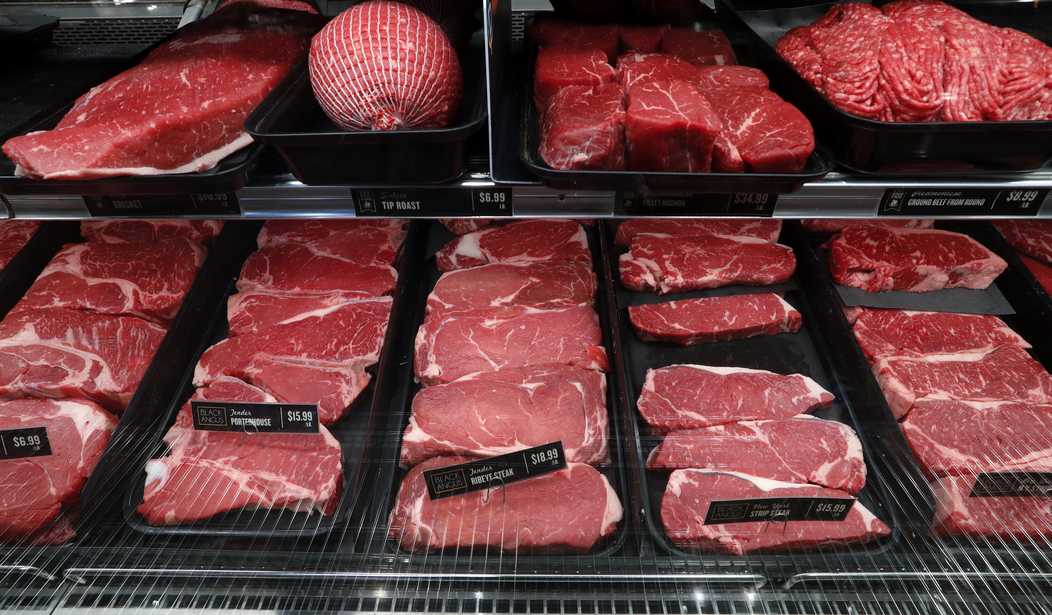When I was about fifteen, my Dad and I were in Dad's car, pulling out of the driveway into the gravel road that the homestead was on - and there, fifty yards or so up the road was the biggest timber rattlesnake either of us had ever seen. Now we didn't bother snakes as a rule; snakes eat a lot of mice, and Dad had two pet bullsnakes, named Pete and Re-Pete, that lived in his woodshed and kept it very efficiently mouse-free.
But in those days the folks had a lot of small grandchildren running around in the summers, so while rattlers were left alone as long as they stayed up in the woods when they came down around the house, they were killed.
This one taped out at 5'4" long, and was as big around as Dad's forearm, so in an excess of experimental spirit, we skinned it, cut it up, and Mom made soup out of it. It was pretty good; tasted (I know) a little like chicken, a little... not.
We ate it all.
Now, I told you that story so I could tell you this one: Ricki Lewis, a biologist for the Genetic Literacy Project, proposes that eating snakes may be more environmentally friendly and tastier than lab-grown meat. I'm inclined to agree.
The meat mantra is that the lab-grown variety doesn’t kill animals and might counter destruction of forests to provide grazing land. Billions have been invested since 2016 in search of cultivated meat, but only a handful of products have emerged, in Singapore, the United States and Israel.
As a biologist, I can’t imagine how to replicate palatable parts of an animal body, honed over the millennia by evolution. Would cultivators coax actin and myosin filaments to knit themselves into skeletal muscle fibers in molds corresponding to the shapes of ribeye or skirt steaks? How closely does the brew of nutrients and hormones recapitulate the biochemical cascades that orchestrate cell division and differentiation as organs unfurl from unspecialized precursors? Would attempts instead result in a hodgepodge of cell types?
And then there’s the issue of scale-up. A $10,000 prototype isn’t encouraging.
Ay, that's the rub. It's the same trouble one runs into when advocating for computer models to replace animal testing in such things as pharmaceutical development (and, for that matter, climate modeling). Biology doesn't have many sharp edges or neat dividing lines. Even the concept of species is a little fuzzy, North American warblers all interbreed and intermingle to the point where sometimes a dedicated birder with forty years of experience looks at a little bird in the brush and thinks, "What the hell is that?"
Biological systems, be they at the level of the organism, or the level of a population, are chaotic and complex beyond most people's imagining. The best computer models we can come up with are laughably crude when compared with a biological system, and the same applies to making lab-grown meat that is even remotely as good as the real thing.
Ain't nothing like the real thing, baby.
See Related:
The Government May Want Us Dead, Part 3: The War on Meat Is a War on Us
OPINION: DeSantis Signing a Bill Banning Lab-Grown Meat in Florida Is the Wrong Move
But snakes as an alternative?
I'm not convinced.More economical than trying to replicate and tweak nature into growing steaks and sushi might be finding new sources of cultivated meat. In “Python farming as a flexible and efficient form of agricultural food security,” published in Scientific Reports, Daniel Natusch of Macquarie University in Sydney and colleagues explore the reptilian option, which is already a staple in Asia.
Snakes are great food sources. They don’t eat often, compared to chickens, cows, and goats. And 82% of the mass of a live snake can become “useable products,” the researchers write.
Well, as long as it's voluntary, we may well suppose. In fact, I am reminded that the Everglades has a snake problem, to the point where the state of Florida is paying a bounty; if they would only tell the local Florida Men that the snakes were good to eat, that may very well help resolve the problem. Of course, the snake option won't help the Irish.
So, sure, we suppose that snakes may contribute less in the way of carbon emissions than lab-grown meat; after all, those labs probably suck up plenty of kilowatt-hours of coal- or natural-gas-fired electricity. And I can attest that snake, at least Iowa timber rattlesnake, isn't bad eating. And, if it makes some climate scolds feel better, they should be welcome to go for it. Let them eat snake! Although I suspect, the Doom Pixie and her ilk will be having none of it.
Many people will, of course, stick with traditional sources, and there's an added benefit beyond deliciousness; red meat can help you sleep.
One reason eating red meat can make you sleepy is because it’s high in fat and protein. These require a lot of energy for your body to break down, which can leave you feeling tired and lethargic.
But don’t let this sensation fool you into eating red meat close to bedtime, as research suggests late-night eating may hinder your ability to drop off.
This is because an active digestive system isn’t conducive to a restful state and can cause disruptions to your natural body clock, as well as sleep apnea and acid reflux.
Red meat also contains the amino acids tryptophan and tyrosine, which are precursors for serotonin, dopamine and melatonin – chemicals responsible for regulating your body clock and making you sleepy.
But there's a catch - there's always a catch:
But a recent study found that eating meat actually decreases sleep duration and quality and that this effect gets worse the more meat is eaten.
Scientists believe this is because red meat contains other amino acids that compete for absorption in the brain, meaning there’s less tyrosine and tryptophan available to be converted into sleepy chemicals.
So, all things in moderation?
The key takeaway in all this is to eat what you like. What climate scolds who whinge about cow flatulence and deforestation don't take into account is that cattle and other ruminants, like goats, can survive on land that is only marginal for plant agriculture and can take rough forage like grasses that humans, with our short digestive tracts, can't use, and turn it into meat - delicious, delicious meat.
My Dad (both before and after we ate the snake) was fond of pointing out that "...things usually work out all right in the end." Whether people eat snakes, beef, or amorphous goo from a laboratory nozzle, we can expect the Earth to go right on turning.














